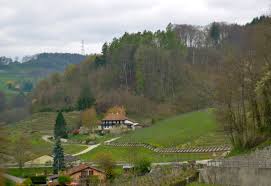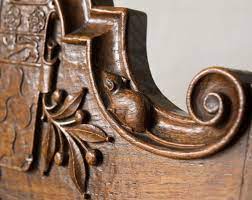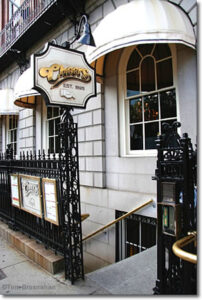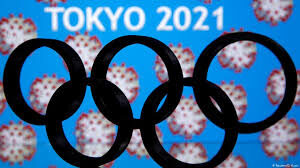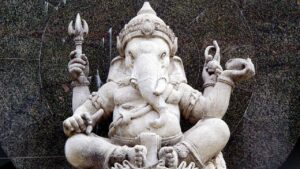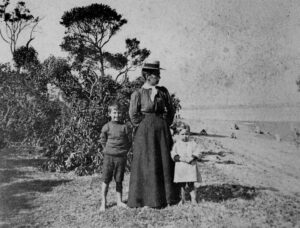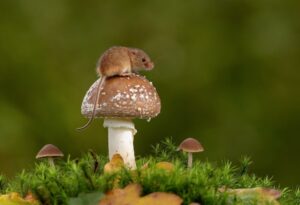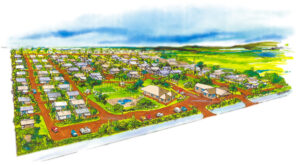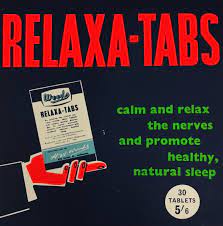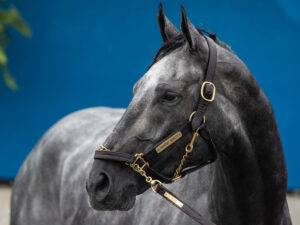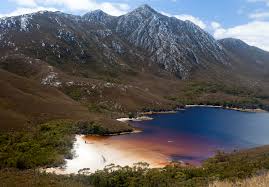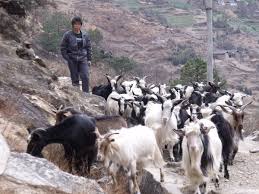Just to put Australia’s lack of flexibility into context, where the AstraZeneca vaccine has been prioritised for vaccinating the population Moderna, as reported below, seems to be leading the pack. Where are we, Mr Morrison? Are you across what is happening, and if you have recently done a deal with Moderna has this advance been factored into the deal? AstraZeneca technology is apparently increasingly obsolete in the face of such coronavirus vaccines.
I remember a different time, when the polio vaccines first came to Australia. I was first injected with the Salk vaccine and then, when the Sabin vaccine arrived, it was able to be administered easily orally because it was a live attenuated virus; the Salk vaccine was quickly jettisoned. But then Australia avoided political furore; we relied on the medical evidence not the share portfolios of various people in influential places .
Also, Prime Minister there is one statistic which you use to justify the continued use of hotels for quarantine – your “99.99 per cent effective at protecting the community against COVID-19” mantra. However, when the air flows are mixed and internal, the problem of cross infection exists, whereas in the case of the Howard Springs facility the air flow is to the outside, with little or no chance of a compromised airflow. Thank God it is only that tiny percentage, Prime Minister. That causes enough chaos as we are now seeing in Victoria, without tempting Fate any further. This is where the use of data only shows what a catastrophic situation it would be if the effectiveness was any lower.
But let’s hear what the CEO of Moderna, based as it is in the Boston area, had to say about its advance, as reported in The Boston Globe, and draw your own conclusions.

Moderna’s chief executive on Wednesday discussed the biotech’s progress in developing a booster shot against COVID-19 variants, saying the company hopes to have authorization from the Food and Drug Administration on one of three booster strategies by the end of the summer or early fall.
Stéphane Bancel said Moderna is working on three different options for a single-dose booster shot against variants of concern: the current vaccine, a new variant-specific vaccine, and a 50/50 mix of the two.
Moderna last week shared early study results that showed its first two options — the current vaccine at half the dosage and a shot of its reworked vaccine — both appeared to raise antibody levels against variants that first emerged in South Africa and Brazil. Bancel said the company is expecting to receive data on the third booster strategy in the coming weeks.
“And then we’ll work with the FDA to get the safe and effective variant-specific booster to the American people as fast as we can,” he added.
The data showed that Moderna’s current vaccine “looks good” in protecting against variants, Bancel said, but the reworked vaccine tailored to fight off newer strains of the virus “looks stronger” against the B.1.351 variant first identified in South Africa.
Bancel said it’s “not impossible” that a booster could be ready for the fall for people who were vaccinated against COVID-19 in December 2020 or early January, especially for high-risk groups.
“When we have that data [on the third booster strategy] in the clinic, we will pick which one we’ll take for authorization,” Bancel said. “We’re hoping that toward the end of the summer or early fall, we should be able, if the data is good, to have authorization for a boost to be used in the fall to protect all of us so that we can have a good fall and a next good winter.”
Bancel also said the company is working with federal officials to test “the mixing of vaccines,” ensuring that regardless of which vaccine a person initially received, it will be safe for them to get Moderna’s booster shot.
“We shared last Wednesday news that the Moderna vaccine in the 12 to 17 years of age has 96 percent efficacy,” Bancel said. “The safety profile is like what we saw for the adults, and we’re working with the FDA to get the vaccine authorized as soon as we can.”
Moderna is continuing to study its vaccine for children 6 months to 11 years old, Bancel said, and that data is expected to take a few more months.
“We have to go very slow down in age to ensure the safety of the children,” Bancel said. “And we’re also starting at the lower dose, because given their lower weight, we might need to lower the dose for children. But for the teens, it will be the exact same dose, which will help the distribution of a vaccine.”
And also….
Under the heading “Breaking Alert”, The Boston Globe publishes the ongoing COVID-19 situation. An example is reprinted below.
The death toll from confirmed coronavirus cases in Massachusetts rose by 19 to 17,413, the Department of Public Health reported Monday. The number of confirmed cases climbed by 281, bringing the total to 657,119.
The number of coronavirus vaccinations administered rose by 25,904 to 7,168,399, state officials reported.
As the population of Massachusetts is about 6.3 million, and about 20 per cent are under 15, it means that many of the residents are being given their second injection of an mRNA vaccine.
Every day, the NYT has a comprehensive list of the data down to county level. Where can you obtain such data published daily in Australia, in relation to vaccination?

When the pandemic was rife in Australia we could follow its course every day with the ABC’s Casey Briggs, whose clear informative manner showed Mr Briggs as The Master of Mathematics; to which he could as well have added The Master of Clarity.
He could report vaccination levels in the same manner on a daily manner if the data were available.
Only criminal idiots would want to the fiddle the supply demand relationship by manipulating the data for so-called political advantage.
You may never recover
This is the only comment I shall make about the Princes. I sympathise deeply and know that probably their relationship, in whichever way it existed after their mother was killed, may one day be repaired to the extent that they do remain civil towards one another. I suspect the attitudes of their wives in this is vitally important.
A loving mother taken from teenage sons in the presence of an inadequate father – undoubtedly a good man but because of his own stunted upbringing with an inability to show compassion – is very familiar.
Genuine compassion is something one recognises when you yourself lack it. People may try and manufacture compassion, but fail because it is an inherent attribute, just like a sense of humour. Most of those who are afflicted with the combination of loss of a loving mother, the inability to ever come to terms with the wakening nightmare of your last glimpse of her, coupled with the attempts by the remaining father to fill the void and failing, who then eventually gives up, marries again and gradually become to you an irrelevance. Onwards into an adulthood for which you are ill prepared and then you have to muddle through life in a cloud of unforgiveness, episodic self-pity and destructive fury.

Occasionally, in among the circumstance of life with a variable dollop of pomp added, you may do something worthwhile. But for what? Your other life upon which the flashlight is never dimmed, wherever you try to escape, always haunts. For those for whom compassion does not pay, there is a delight in having all your trespasses laid bare, yet as those who trespass against you seek justification in hypocritical comment only, which encourages you to further trespass. A Sisyphean existence?
Alas, poor Harry, I knew him well.
Is anybody listening?
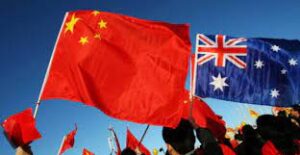
The three articles on China published last week in the AFR are almost like the last hurrah from one of the most insightful and level-headed journalists still living. Max Suich is one of those people who has lived a long and varied life; and his reflections on the current state of play in China draws upon his own views and those of a number of his contemporaries, and their apprehension about the course of current Sino-Australian relations.
This trilogy commences with reference to the world conditions when the AFR was started 70 years ago. It was not long after that I was on a cargo boat in the South China Sea in sight of one of the disputed islands of Matsu and Quemoy, tiny National Chinese outposts close to the mainland and Communist China. It was a time when the Chiang Kai-shek regime in the island of Formosa was seen as the legitimate representative of China in the United Nations. How fanciful that appears now, but then as we crossed the South China Sea, we were buzzed by American Starfighters which swooped out of the clouds and came over the ship just above mast height – twice.
Bloody hell, was it necessary to demonstrate to a small ship carrying wool and grain to Japan how powerful America was? The power equation certainly has shifted over the past decades in the Southern China Sea. American planes intimidating ships close to the Chinese shore in 2021 – I don’t think so – unless America was on war footing.
As for Australia: The conclusion is that while we dramatically changed our approach, we did not define a policy objective for the new relationship with China or a strategy to achieve it. Nor did we thoroughly review alternative options. We elevated anger about Chinese activities in Australia and latent ministerial hostility towards China, turning threadbare slogans into policy. Traditional measured, thoughtful policy-making in an area of such great importance is lost.
Thus spake Suich. He sets out his conclusion succinctly and directly on the first page of his trilogy. He then spends much of the rest justifying the conclusion, which is more a thesis. He had come to that conclusion as the anti-Chinese forces in this country were emboldened by Trump’s antics. No matter how Turnbull may want to re-write history he should share the opprobrium which Max dishes out.
We have no hedge – we are “all the way with the USA” but what if the USA is not there? How does our military, naval and air force stack up, in the face of an aggressive China? Not much, is his assessment. Australia is vulnerable especially, as he pointed out, Pine Gap would be an early target for any Sino-American conflict. Therefore, whether or not America proved to be a steadfast ally, part of any war strategy in this part of the World would be to knock out Pine Gap, inevitably leading Australia being locked into the conflict.
Max Suich has dissected the Australian government approach into three phases, “push back, call out, out in front”. The three stage approach typifies a crude approach to the reality where the right wing infiltrate in the intelligence always inflates the danger in order to maintain their relevance to government. Max quoted one still serving official – “without Trump the hawks would not have the mode to develop their own insane line that we had no choice but to divert trade flows and supply chains.”
As he goes on to write, the John Howard approach twenty years ago “we don’t have to choose” between America and China has been dumped, but echoing experienced advice there was no way that Australia, with its limited defence forces, could possibly back up its bellicose rhetoric. In fact, as Turnbull has written in his recent opus, Australia has to be careful where its warships sail in Asian waters because there is no doubt that the Chinese are watching. The Americans may have the power to extricate a ship which ventures too close, but Australia by itself does not.
Nevertheless, paranoia is fanned by the idea that the Chinese government is penetrating the Australia community and in particular the Chinese diaspora. Such investigation of this has only yielded Sam Dastyari who, despite his indiscretion, still seems to be involved in the sensitive vaccine rollout. There was all that flurry around Gladys Liu, the Coalition member for Chisholm, because of her apparent ties in China, but that seems to have dropped off the intelligence schedule and is not mentioned by Max anywhere in the article.
The Government seems not to be bothered by the experience of South Korea where, earlier in the last decade, it experienced a Chinese trade freeze. Yet for all the bravado, the articles note three forces operating currently in our dealings with China. The alienation from China has been aggravated, as he points out, by the circumstances of the COVID-19 virus first being seen in Wuhan and the subsequent lack of co-operation by the Chinese in the investigation of its genesis, where one of the major cheerleaders for the investigation has been Australia.
The first force is the feeling of being abandoned, and if one delves into the history of the ANZUS pact, it was constructed originally against the wishes of the State Department in Washington – the nightmare of “Washington not picking up the phone.” Then the rise of Xi Jin Ping, who has disturbed the comfortable trading arrangement that some Australians had built up with various Chinese businesses. The impression of a free enterprise economy able to exist under a one-party system was brought to a halt by Xi .
Max recognises that Xi’s assertiveness and his expansionary vision for China as a truly Pacific maritime power was another impetus for the rise in Australia of the intelligence community influence and their political hawks on both sides of the parliamentary aisles. Any moderating influence of DFAT is seemingly ignored and Max quotes Foreign Minister Payne going it alone on the Wuhan inspectors seeking answers on the Wuhan connection with the virus, and particularly whether the virus escaped from a laboratory there.
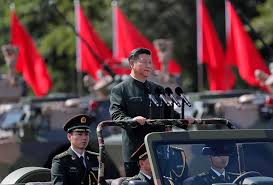
He doesn’t attempt to analyse Xi’s character, because being pragmatic, Max recognises Xi is what he is, and nothing will change him. However, this is not to say that defining his strengths and weaknesses is not more than a parlour game. Remember XI was a princeling forced to eat dirt – he understands how the game “Go” unravels. In this game, there is a need to understand its length. Xi does not intend losing; he has tasted the soil. As someone said to me, he doesn’t care about the niceties.
Max says that the breakdown of our government’s foreign policy development process and its supplanting by the security and intelligence services and their vociferous supported is a main driver of Australian government attitude.
I know there is a younger brigade of Australians who have repeatedly dealt with the Chinese and who believe that Obama’s soft position towards China would have been reflected in the present Biden administration. However, free of Obama, these so-called liberals have adopted a hard line almost indistinguishable from that of the Trumpers. In this narrative, Obama is the villain.
As Max said, we took more risks than we should; we could have been adroit. This is the position of “former senior officials who lament the lack, still, of policy making and disciplined public language about China, that weighs up options and employs some subtlety and seriously considers the risks of war.”
One source, Paul Dib, compares the situation to the 1930s where the risks set off by territorial confrontation were ever present, in Europe, Africa, and Asia. In the meantime, Australia then lived in bliss, ostensibly under the wing of the British Empire. Now it is the USA to continue to shield us, but the hawks are everywhere so that his conclusion of this need to follow the USA is “a bleak but realistic view…if the hawks of Washington and Beijing are not stifled, if compromise is rebuffed, war will be the consequence, a disaster for Taiwan and the combatants and a disaster for the rich and growing economies of our region.”
China is not complicated as suggested in the article – the World exists at the whim of Xi Jin Ping.
His adversaries are varied; have we ever really looked into the eyes of these hawks of ours – these eyes exhibiting uncertain bravado and fear?
These are not the fanatics which drove the agenda of the 1930s but more the muddle-headed wombats who took us into the Vietnam war. This time, the War will not be an away game.
I do not want the prospect, if I survive, of stumbling through the rubble which was once Sydney. Everybody, look carefully at Gaza and that was only an 11 day’s conflict.
Thank you, Max for encouraging me to write this critique.
A Prickly Situation
My eye was caught by an article in the NYT this week. It concerned the poaching of rare species of cacti from the Atacama Desert in Northern Chile and them being found smuggled into Italy.
The Atacama Desert is not particularly large compared to other deserts, but it is a remarkable ecological structure. There is an area where it has not rained for about 500 years; there is another part where the largest copper mine in the world is located.
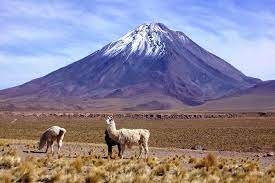
As we looked out from our hotel in San Pedro de Atacama in this patch of green, the dominant view rising high from the desert was Licancabùr, the volcanic cone rising high above the desert. The volcano is very close straddling the Bolivian and Chilean border, and as you near it, sulphur is mined on its slopes. Sulphur – ah, the whiff of hell, but here the winds tend to cart the smell away.
This desert has historically been an area of dispute between Chile, Bolivia and Peru. It was called the Saltpetre War, and ostensibly it was about Bolivia retaining access to the Pacific Ocean but, as the name implies, it was a battle over the nitrite deposits used in both fertilisers and explosives. Chile won that war, which has enabled that country to exploit the mineral rich Atacama and, since discovered, also the site of substantial lithium deposits.
San Pedro de Atacama is in an altiplano pocket of the desert, the remnants of the Andes, which mean one is strolling and riding around at 2, 408 metres. The highest point we reached were the Geysers del Tatio which lie at 4,330 metres, a large cauldron of boiling water where there are signs in English and Spanish warning for you not to get too close to the edge of the multiple pools. The sudden spurts of boiling waters and steam at such an altitude are very impressive. There are no fences; you are able to freely wander. At least one tourist did step too close apparently and ended up boiled in one of the pools.
Even though we were only 14 kilometres from the Bolivian border we skipped walking up the volcano which tops 5,920 m. For comparison, Mount Kosciuszko is 2,200 m high.
This area of the Atacama altiplano is very diverse. What with the geysers, and flamingos standing in salt water at an alkaline PH of 10 and eating the crustacea out of the brine. These tiny marine life determine the flamingoes’ colour. Every desert has “bad lands” of rocks and gulches. Here Atacama has its red rock folded into buttes and jagged cliffs. They were thought to mimic valleys on the moon rather than a scenario from a Hollywood Western.
Here I found myself rooted, unable to move, halfway up one of these hills, on a goat track not one-person wide, winding itself to the peak. I have always suffered from vertigo, and stupidly I looked back and down. The cheerful chatter ceased. There is nothing more debilitating than being stuck like that, with feet in the shifting sand unable to move. Here, feminine resolve came to the forefront to uproot the fear – women on either side of me giving me their hands, encouraging me onwards.
We stop on the way in stone cottage villages where the construction of the houses would not have changed since Inca times. One of these villages called Machuca had about ten houses, was situated at 4,000 metres but still had its church perched on the hill above the houses. This is subsistence living. Guanacos can live at that high altitude and like their relatives, camels, will drink salty water, but like the vicuñas are not domesticated. The flightless rheas dot the landscape, not venturing close.
It was an enthralling landscape and the hospitality overall was great, the only blemish being locked in a poorly ventilated minibus with an English family for three hours as we went back to Antofagasta to catch the plane back to Santiago, but they probably had the same feelings towards us – a little more Albion disdain. Having sprawled across the front rows they objected to us wanting the windows being open. Not even my wife’s imitation of Shrek’s donkey colleague amused them.
But you see what is pointed out to you or what you are looking for, and in the desert, on this trip I failed to appreciate the flora. In the Atacama are some of the rarest and most intricate cacti. I suppose I should have been interested given the use of cactus wood to make the doors of the cottages.
Now there is an increasing market for those unnoticed cacti. The cacti of the Atacama are special. A year after the robbery from the Atacama happened, the NYT has reported on a cactus “heist”. This had been uncovered in Northern Italy. Most of the stolen plants, many over a hundred years old, had been taken from the Atacama.
As the NYT said in the article:
Cactuses and other succulents are hot business today. They have become the darlings of social media, promoted by indoor plant influencers for their outlandish looks and minimal care requirements. The pandemic only increased their popularity, with shops struggling to keep some species in stock.
The average hipster’s cactus collection will include only common species propagated in nurseries. But for some specialist collectors — who tend to be middle-aged or older men — the hobby is much more serious.
“A lot of what drives the interest and passion for these plants is their uniqueness and rarity.”
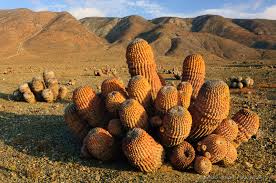
Of course, that is the problem. People with too much money, bored by their hedonism, looking for something different and in this instance, something requiring little maintenance. Perfect!
There is a line to be drawn between appreciation and acquisition. I have never been a xerophile, and in fact cacti watching has always been low on my attention span. Having written that, cacti can be striking. I wrote a piece one winter in Arizona called “Snow on the Saguaro”. Seeing those majestic cacti, their branches smothered in white, reflects how severe the winter was we were then traversing. While we marvelled and I wrote this, there was no passion to dig up all these cacti and transport them Los Angeles to become a prop for silver tinsel and light. A silly notion, but no more silly than digging up the cacti in the Atacama for them to be festooned on balconies of the palazzi of Milan.
One wonders how many of those who buy plants illicitly taken, really appreciate them, or do they just want to have something nobody else has.
Anyway, this story had a better end than most of these robberies. As has been reported:
844 cactuses made the return journey to Chile. Around 100 others had died, and 84 stayed in Milan for study.
Mr. Cattabriga (responsible for apprehending the shipments which had first passed through easier EU custom controls in Romania and Greece) has been making daily video calls to try to ensure the plants are being properly cared for while they are in quarantine. According to Bernardo Martínez Aguilera, head of the forest inspection department at Chile’s National Forest Corporation, the final goal “is that the majority of these individuals return to their natural environment, which they never should have left.”
Rules have been introduced among cacti lovers not to purchase the seeds for such exotica, on the grounds that if these cacti are allegedly propagated, it provides a cover for the poachers’ lack of provenance. A worldwide problem but this is a salutary tale. The answer is always the same – curbing the poor attracted by the cash, harvesting the cacti and a cohort of wealthy humans who always vote for subsidy, tax breaks and entitlement with rapacious middlemen who always vote for subsidy, tax breaks and entitlement with greasy paws.
Mouse Whisper
Is it an unnoticed cultural cringe? The Swans are a Sydney Australian Football team, which was transplanted from Melbourne where they were known as the South Melbourne Football Club. The colours are red and white which earned them the early nickname of “The Bloods’. But somehow, presumably because South Melbourne was originally a marsh from which the Albert Park Lake was carved, the idea of calling the team by the name “Swans” was floated. But the white swan, whether cob or pen, is not an Australian; it’s a Pom!
Black swans are as Australians as Vegemite. If the club wanted to call itself the Swans, it should have adopted black. I am surprised that my indigenous brothers played with colours and name which reflected colonial attitudes. Especially as there are only black swans on the Albert Park Lake.
Imagine the Sydney Swans changing to a black and red strip. What would they say at Essendon?
And don’t me started on the St George Illawarra Rugby League colours taken from the St George Cross which I believe has some relationship to an island off Europe.
Dragons – yes, they have relation to Australia – water dragons can be seen all over Sydney in nurseries.
By the way, the native animal of NSW is the platypus and the bird kookaburra, but a Major Mitchell cockatoo has all the elements of red (if actually pink) and white. But barracking for the platypi, the Kookas (or Burras or the Cockatoos) – could be very authentic like the Eels.
My preference. Come on The Majors.





